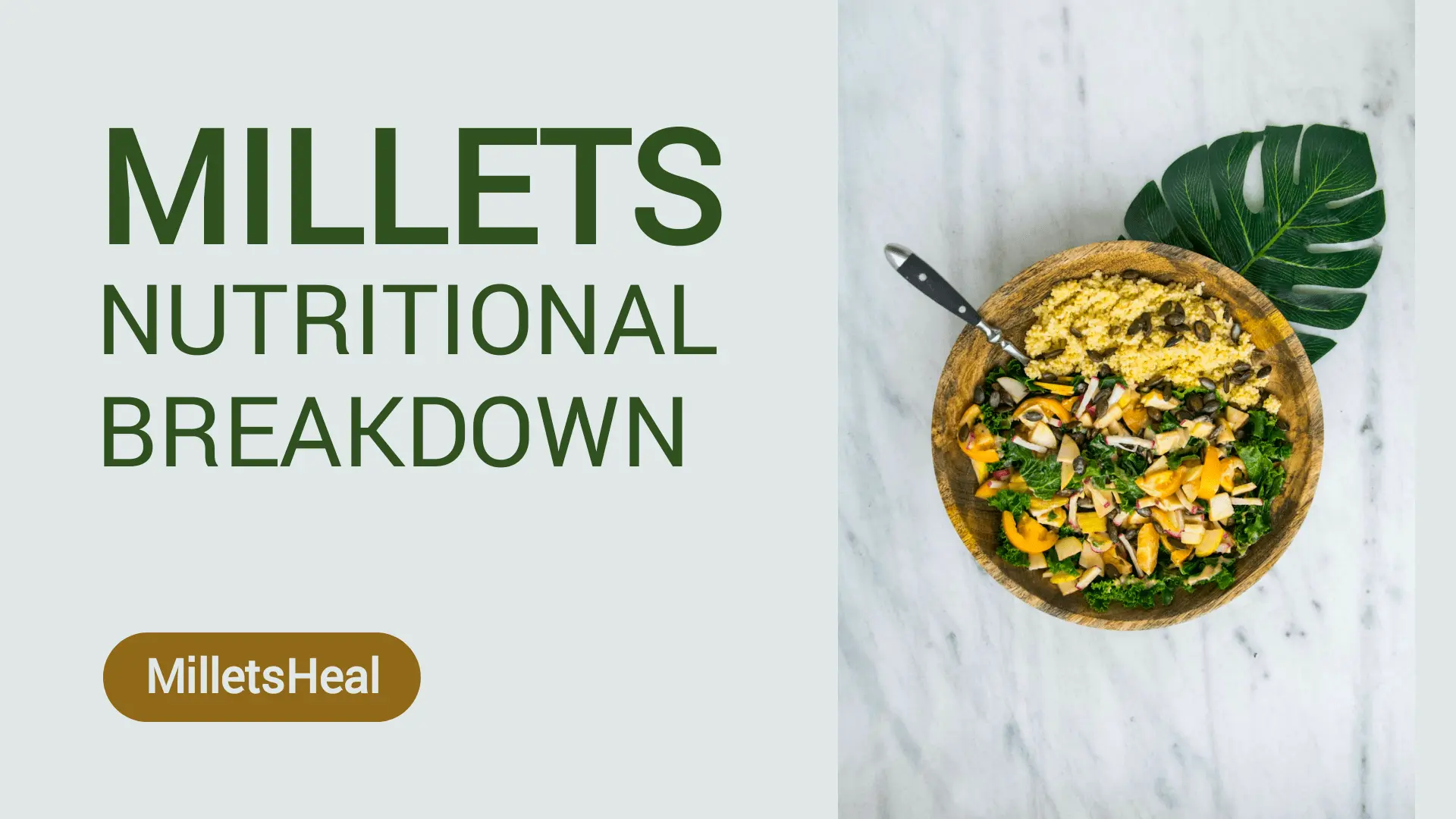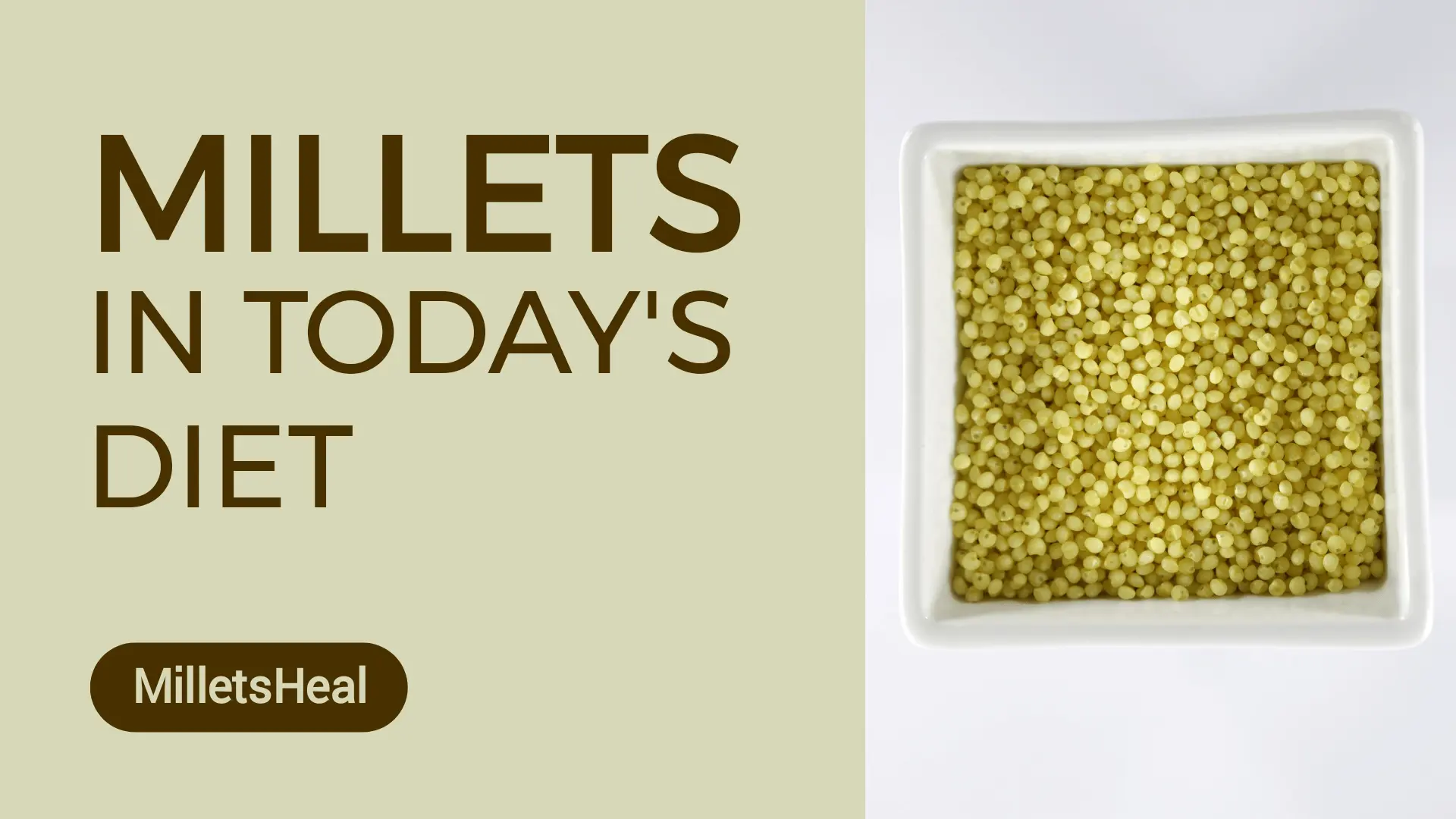In the pursuit of a wholesome and nourishing diet, the spotlight often falls on the significance of dietary fiber. Among the myriad choices available, millets emerge as unsung heroes, carrying a plethora of benefits for digestive health.
What are Millets?
Millets are a group of small-seeded grains that have been cultivated for thousands of years. They are gluten-free, easy to digest, and rich in essential nutrients.
Millets come in various types, including pearl millet, foxtail millet, finger millet, and many more. These grains are highly versatile and can be used in a wide range of dishes, such as porridge, salads, bread, and even desserts.
Understanding Dietary Fiber
Before we dive into the specific benefits of millet, let’s take a closer look at dietary fiber. Dietary fiber is a type of carbohydrate that our bodies cannot digest fully.
It passes through the digestive system largely intact and serves several important functions. There are two types of dietary fiber: soluble and insoluble.
Soluble Fiber
Soluble fiber dissolves in water and forms a gel-like substance in the digestive tract. This gel helps to slow down digestion, regulate blood sugar levels, lower cholesterol, and promote a feeling of fullness. It also acts as a prebiotic, providing nourishment for beneficial gut bacteria.
Insoluble Fiber
On the other hand, insoluble fiber does not dissolve in water and adds bulk to the stool. It helps prevent constipation by promoting regular bowel movements, reducing the risk of hemorrhoids, and maintaining a healthy digestive system.
Health Benefits of Millets
Improved Digestive Health
Millets are particularly rich in dietary fiber, making them an excellent choice for promoting digestive health. The high fiber content aids in regulating bowel movements, preventing constipation, and reducing the occurrence of gastrointestinal disorders. Consuming millet regularly can help maintain a healthy gut and ensure smooth digestion.
Balancing Gut Microbiota
The health of our gut is intricately linked to the diversity and balance of its microbiota. Millets, with their prebiotic properties, serve as a nourishing substrate for beneficial gut bacteria, fostering a healthy microbial environment.
Blood Sugar Control
For those dealing with diabetes or trying to prevent its onset, millets are an ideal addition to the diet. The soluble fiber present in millets helps regulate blood sugar levels by slowing down the absorption of glucose.
This can help maintain steady blood sugar levels and prevent spikes and crashes, making millet a diabetic-friendly food option.
Weight Management
If you’re looking to shed a few pounds or maintain a healthy weight, millets can be your ally. The high fiber content in millets helps increase satiety, keeping you feeling fuller for longer and reducing the urge to overeat. This can ultimately lead to better weight management and a lower risk of obesity.
Heart Health
Millets are heart-healthy grains due to their high fiber and nutrient content. The soluble fiber in millets helps lower LDL cholesterol levels, known as “bad” cholesterol, thereby reducing the risk of cardiovascular diseases.
Additionally, millets are low in saturated fat and rich in magnesium, which further promotes heart health.
Enhanced Nutritional Profile
Apart from their fiber content, millets are a storehouse of essential vitamins and minerals. They are rich in antioxidants, B vitamins, iron, potassium, and magnesium, all of which are vital for overall well-being.
Including millets in your diet not only elevates your fiber intake but also provides valuable nutrients that support various bodily functions.
Millets: A Fiber-Rich Powerhouse
- Foxtail Millet (Setaria italica): This gluten-free millet is a rich source of insoluble fiber, promoting digestive regularity. It also boasts essential minerals such as iron and magnesium.
- Pearl Millet (Pennisetum glaucum): With a notable fiber content, pearl millet supports digestive health and offers a range of nutrients like B vitamins, iron, and zinc.
- Finger Millet (Eleusine coracana): Popularly known as Ragi, finger millet is a fiber-packed grain that aids in digestion. It is also a powerhouse of calcium and other micronutrients.
- Barnyard Millet (Echinochloa crus-galli): This millet variety is abundant in both soluble and insoluble fiber, contributing to a healthy digestive system. It is also gluten-free, making it an ideal choice for those with gluten sensitivities.
Incorporating Millets into Your Diet
Now that we understand the health benefits of millets, let’s explore some delicious ways to include them in our daily diet:
- Replace Refined Grains: Substitute refined grains with whole millets in your diet. This simple switch can significantly boost your fiber intake.
- Wholesome Breakfast Choices: Start your day with millet-based breakfast options like ragi porridge or foxtail millet Upma. These not only provide fiber but also essential nutrients for an energetic start.
- Colorful Millet Salads: Create vibrant salads incorporating a mix of millets, vegetables, and herbs. This not only enhances fiber content but also delivers a variety of vitamins and minerals.
- Millet Snacks: Opt for millet snacks such as ragi chips or foxtail millet patties. These not only satisfy your taste buds but also contribute to your daily fiber quota.
Conclusion
Dietary fiber plays a crucial role in maintaining digestive health, and millets are a fantastic source of this essential component. From promoting digestion and weight management to controlling blood sugar levels and supporting heart health, millet offers a multitude of benefits.
By incorporating millets into your daily diet, you can enhance your overall well-being and enjoy the delicious taste of these incredible grains. So, dive into the world of millets and embrace their digestive champion status for a healthier you.








